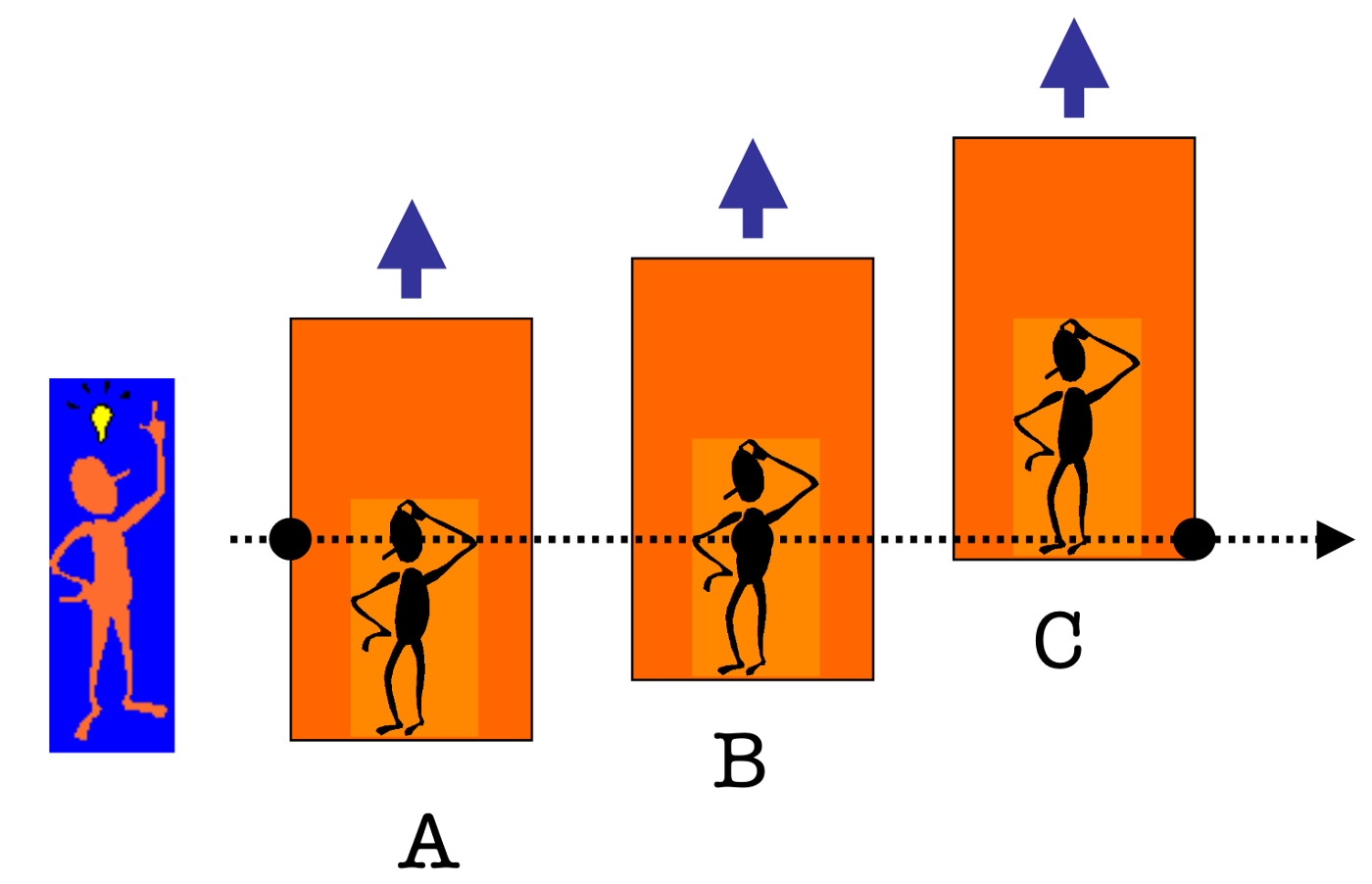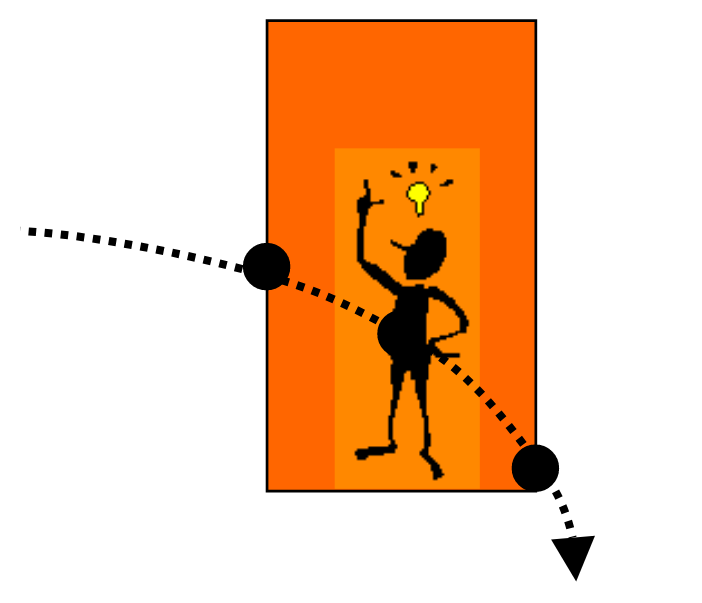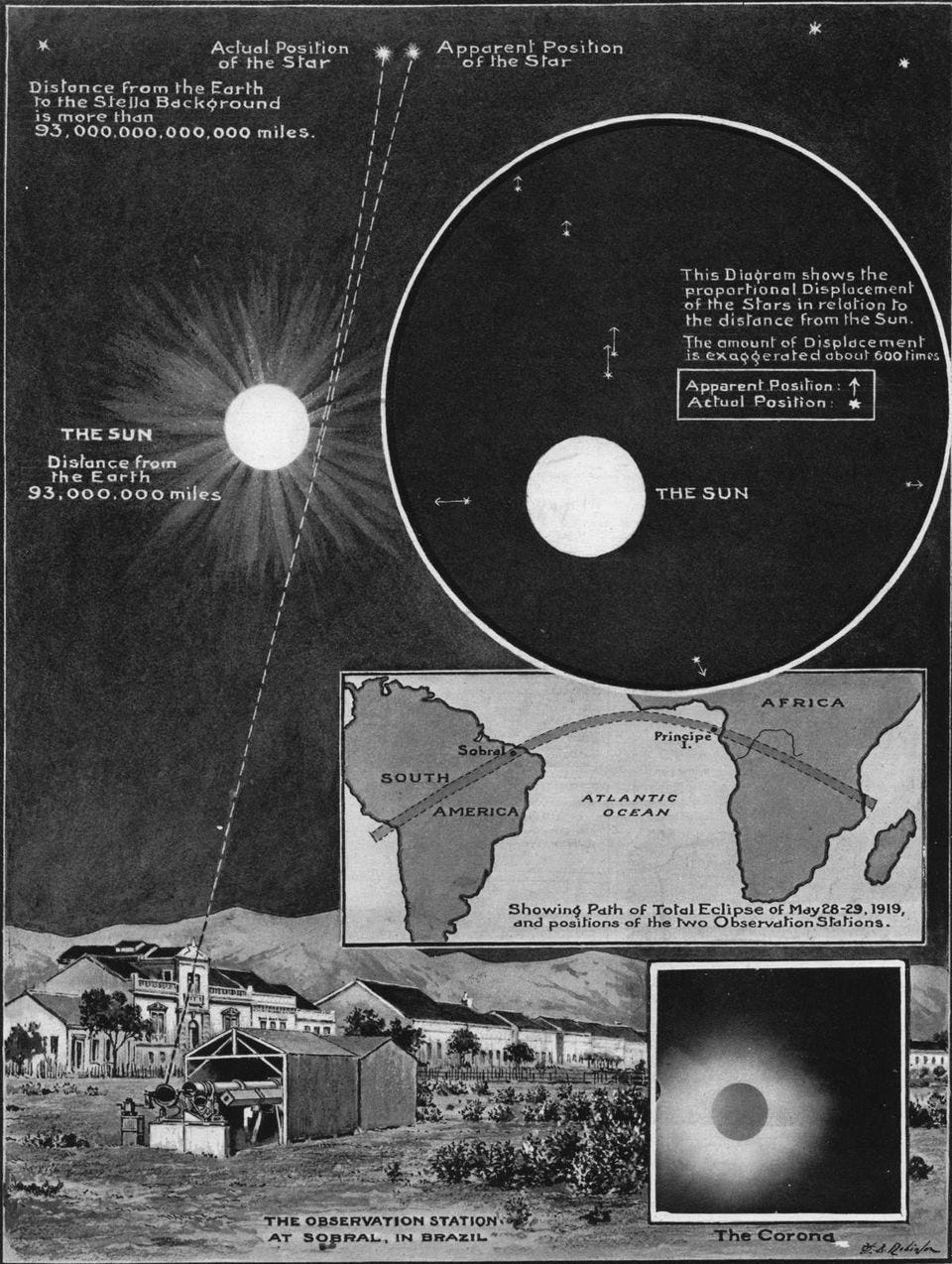The most characteristic element of Einstein’s genius was probably his ability to devise thought experiments. Using imaginary trains and elevators, the German physicist managed to predict the existence of phenomena very far from common intuition. It often took many years for technologies to allow some of Einstein’s predictions to be verified by observation. Still, when those verifications finally arrived, the scientists could not help but observe the perfect agreement of the observational data with what the thought experiments had prefigured.
Exemplary cases of physical phenomena anticipated by pure thought experiments are two effects due to gravity: the bending of light and the time dilation under the action of a gravitational field. Both derive from the surprising consequences of one of the cornerstones on which Einstein’s theory of gravity is based: the equivalence principle . This is the idea that, within a sufficiently small reference system, such as the inside of an elevator or a rocket sealed off from the outside, an observer is unable to distinguish the effects of inertia from those of gravity. Without looking outside, he is unable to say, for example, whether the fact that his body and the objects surrounding him are drawn to the floor is due to the presence of a gravitational field or the thrust imparted by a constant acceleration in the opposite direction.
Gravity curves the path of light
Consider the following two cases:
- an observer locked in a motionless elevator cabin on the surface of the Earth and
- an observer who is, instead, in space, far from any gravitational field, closed inside a rocket driven by an engine that yields an acceleration of 9.8 m/s², precisely equal to the acceleration of gravity felt on Earth at sea level.
For the equivalence principle, the physical laws that the two observers experience are exactly the same. A hammer, for example, will fall on the floor with the same speed both in the elevator cabin that is motionless on Earth and in the rocket that accelerates in space. But this equivalence has curious consequences for the behavior of light. Let’s imagine that a laser beam is aimed in the rocket’s cockpit from the outside, through a porthole. As the laser beam passes through the cockpit, the rocket continues to accelerate under the thrust of its engines. For an observer who is outside the rocket and who is stationary with respect to the light source, the laser light hits the opposite wall of the cockpit at a point that, relative to the direction of the rocket’s motion, is lower — albeit very little — compared to the height from which the laser beam penetrated inside.

For an external stationary observer (shown on the left on the blue background), a laser beam that penetrates inside an accelerating rocket follows a straight path and hits the opposite wall at a lower point than the entry point. Due to the constant acceleration of the rocket, the difference in height of the light beam inside the rocket cabin as it moves from position A to position B is less than the height difference between positions B and C
For this observer, the motion of the light emitted by the laser is always straight. The beam hits the opposite wall of the cockpit lower than the point it entered merely because the rocket continued to accelerate as the laser beam passed through it. But for the observer inside the rocket, things are different. For his experience, the cockpit is motionless. The light beam that passes through it describes a curve in traveling the path from the porthole to the opposite wall: the steeper the curve, the faster the speed of the rocket as the engine accelerates.

For an observer inside the rocket, the cabin is stationary. It is the light that moves and, while crossing the cabin from one side to the other, describes an increasingly steep curve, as it approaches the floor
What can be deduced from this curious thought experiment? It can be inferred that, by the principle of equivalence, an observer who is in the quiet elevator cabin on Earth will see a laser beam passing through the cabin, forming _the same curve _seen by an observer who is in the continuously accelerating rocket. In other words, the light inside a gravitational field does not propagate in a straight line but follows a curved trajectory. Therefore, not only bodies with mass such as human beings and hammers are subject to gravity, but also photons (the quantum of light), which have no mass at all.
The most spectacular experimental confirmation of this prediction occurred in 1919 when the famous English astronomer Arthur Eddington made public the results of the analyses made on the photographs of the total eclipse of the Sun of 29 May, made during two scientific expeditions, one in Brazil, the other in Principe Island, off the coast of West Africa. The photographs showed that some stars, visible near the edge of the Sun during the eclipse, were in a slightly different position from that they usually occupied in the night sky when the gravity of the Sun did not interfere with the path of their light. The extent of the shift was in excellent agreement with the predictions derived from general relativity, published in late 1915. But the original root of the forecast was in the thought experiment that demonstrated the impossibility of distinguishing the effects of gravity from those of any acceleration. Experimental confirmation that gravity was actually capable of bending the path of light, taken up by newspapers all over the world, suddenly transformed Einstein into a public figure, the most famous scientist of the 20th century.

A reconstruction published in “The Illustrated London News” of November 22, 1919, showing the position shift of some stars near the solar edge observed during the total eclipse of May 29, 1919 (the extent of the shift is exaggerated 600 times to make evident the phenomenon). The measurements performed on the photographic plates confirmed the predictions of general relativity. Sun’s gravity was actually able to bend the path of light, making the stars near the solar edge appear in a slightly different position from the usual one
#gravity #physics #time #science #space #data science
